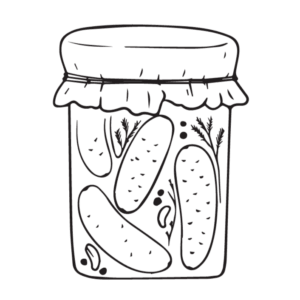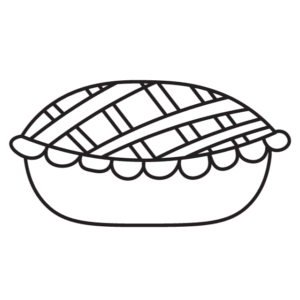So, you just built yourself a beautiful raised garden bed. Maybe it’s cedar. Maybe it’s galvanized steel. Maybe it’s an old cattle trough you dragged home from your grandpa’s barn. Either way — it’s sitting there, looking all shiny and promising, waiting to be filled.
Now comes the part nobody wants to talk about: filling it.
Because let’s be real — you don’t want to spend $200+ just to dump fancy bags of soil into a box, right? That’s like buying a luxury grill and only using it for microwave burritos. We can do better. Let’s talk smart, layered, lazy genius ways to fill a raised garden bed — for cheap, for keeps, and for your plants to thrive.
First: Know Your Bed Dimensions
This might seem obvious, but before you go loading up the truck with bags of compost, take 60 seconds to measure your bed. You’ll want:
- Length
- Width
- Height
Multiply those and divide by 27 to get your cubic feet → cubic yards conversion.
(Or, just use an online soil calculator because this is 2025 and we have the internet.)
Let’s say you’ve got a 4×8 bed that’s 17 inches deep. You’re looking at about 1.6 cubic yards of material.
That’s… a lot. But don’t worry — we’re not filling that whole thing with premium soil.
The Layering Method (a.k.a. “Lasagna Gardening”)
We’re gonna build this bed like a layer cake. Each layer does something important, from drainage to decomposition to soil health. Here’s how it goes:
🥇 Bottom Layer: Chunky Organic Stuff (8–10″)
Use what you’ve got:
- Fallen branches
- Logs
- Sticks
- Wood chips
- Straw bales
- Corn stalks
- Even cardboard
This layer is all about bulk and drainage. It slowly breaks down and saves you from wasting high-dollar soil on the bottom two-thirds of the bed, where roots rarely reach.
Pro Tip: Avoid black walnut wood or treated lumber — toxic to plants.
🥈 Middle Layer: Brown + Green Organic Matter (5–8″)
Think of this as your compost-in-progress layer:
- Lawn clippings
- Chicken bedding
- Old hay
- Manure (aged, not fresh)
- Kitchen scraps (no meat or dairy)
- Mulched leaves
You’re basically building a hot compost sandwich. It’ll cook down and feed your top layer over time.
🥉 Top Layer: The Good Stuff (6–8″)
Now we roll out the red carpet for your plants.
Here’s a simple mix that’s gold:
- 50% topsoil
- 30% compost
- 20% coco coir or peat moss
Mix in a little worm castings or rock dust if you’re feeling fancy.
Bagged raised bed mix works too — but mix it with compost and perlite so it drains well. Don’t just dump straight potting soil in there or you’ll end up with a spongy swamp when it rains.
Bonus Tip: Add a Cover Crop or Mulch
If you’re filling your beds in fall or winter and don’t plan to plant right away, toss in a cover crop like clover or rye. It’ll protect your soil from erosion and feed it nitrogen for spring.
Or just cover with:
- Mulch
- Straw
- A tarp
- That old Amazon box pile in your garage
The goal: keep moisture in, weeds out, and soil microbes happy.
Real Talk: How Much Does It Cost?
Here’s the magic: if you’re clever with your layers, you can fill a large raised bed for $40–80 instead of $200+. Use local resources:
- Ask neighbors for grass clippings
- Hit up local tree services for free wood chips
- Check with farms for aged manure
- Dig into your own compost pile (or start one)
You’re not just saving cash — you’re building long-term, nutrient-dense soil that gets better every year.
What to Avoid
Let’s keep your garden healthy. Here’s what NOT to use:
- Treated wood scraps
- Pet waste
- Glossy magazine paper
- Plastic anything
- Fresh manure (wait at least 6 months — nobody wants tomato plants that smell like a barn floor)
FAQs (Because You Know They’re Coming)
Q: Can I just use all compost?
You can, but it may be too rich and fluffy. Mix with soil for structure and moisture balance.
Q: Will logs at the bottom attract termites?
If your bed is metal or well-lined, you’re probably fine. Keep the bed a few feet away from your house just to be safe.
Q: How often do I need to refill?
Every 1–2 years, your layers will settle. Just top off with fresh compost or soil in early spring.
Final Thoughts
Filling a raised garden bed doesn’t need to be expensive, complicated, or exhausting. Use what you have, layer smart, and let nature do the work.
When you walk out in spring and your kale is thriving, your carrots are pushing through like champs, and your neighbors are asking how you got soil that dark — you’ll know it was worth every pitchfork.
Now go fill that bed, grow some joy, and maybe reward yourself with a second cup of coffee or a fresh slice of sourdough. You earned it.





